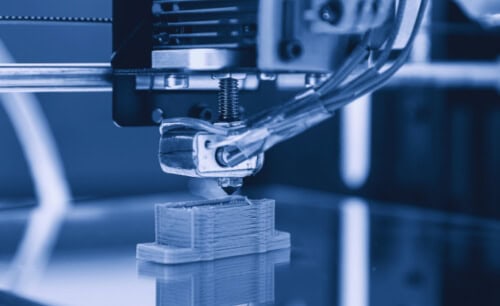More and more companies are turning to 3D printing to give their businesses a “significant” competitive advantage. According to a survey published in the 2019 edition of “The State of 3D Printing,” additive manufacturing has taken on a bigger role in their business strategies, and nearly half of those polled say it has given them a distinct competitive advantage. Another 55% indicate that 3D printing is one of their strengths, and because they have adopted the technology, they are staying ahead of the competition.
While 3D printing may seem like the latest technology, it has actually been around in one form or another since the 1980s. Many of the respondents to the survey have been using 3D printing for several years, and while its primary use started as a tool for prototyping, it’s starting to become more and more popular in serial production.
Don’t get left behind—if you have not yet considered 3D printing to improve your manufacturing processes, here are just five of the many reasons to give it some serious consideration:
- 3D printing is significantly faster than traditional methods
Products that are made through conventional manufacturing, including CNC machining and casting, can take months (or even years) to design, manufacture, and test. Conversely, 3D printing can move designs to production in days and weeks, not months or years. With its rapid prototyping capabilities, 3D printing allows companies more time to iterate the prototype and find the best market fit for their products.
By using 3D printing technology, it’s possible for a business to design a part, manufacture it on a 3D printer, and test it—all within days, rather than weeks or months. The shorter lead times alone can give any company a substantial competitive advantage.
- 3D printing technology is cost-effective
Traditional prototyping methods require a great deal of human labor, and labor costs play an enormous role in the total cost of developing and producing a product. Experienced programmers, machinists, and operators—along with the expensive machinery needed to manufacture the parts—can drive up your costs in today’s competitive environment.
3D printing, in contrast, requires fewer operators and machines to complete the manufacturing process. Also, there is much less material waste with additive manufacturing than there is with the subtractive process, where the product is typically machined from a solid block and may require expensive tooling. 3D printing uses only the material that is necessary to create a part.
- 3D printing allows product designers to iterative and improve quickly
The speed and lower costs of 3D printing allow for the improvement and enhancement of a product without the labor-intensive methods of traditional manufacturing. Not only can companies make changes quickly, but they can give their customers a physical demonstration of the enhanced product instead of merely showing them a design change on a computer screen. If a problem is found, the CAD file can be easily modified, and you can print a new version the next day. The risks of misunderstood information are greatly reduced with the tangible product. Expensive labor, material, and tooling are also eliminated with 3D printing.
- 3D printing technology is faster to implement
Initially, 3D printing became popular in mass media about ten years ago. Since then, interest in the technology has soared, and easier-to-use software and printers have become available to businesses. Today, practically any manufacturer can learn and integrate the technology into its production process within a few days.
In contrast to the considerable expense of setting up traditional machinery and tooling, the costs of setting up a 3D printer is much less involved. Once set up, 3D printing operations are essentially automated and don’t need additional labor, making it significantly more accessible than CNC machining, casting, and injection molds.
- Better designs can substantially improve quality
The constraints of traditional manufacturing methods can often result in inferior designs and lower-quality prototypes. By allowing for new, previously impossible design freedom, 3D printing essentially guarantees better, more functional designs. These novel designs may lead to higher-quality products down the road.
Get Started with 3DEO – Production Metal 3D Printing
If you’re not already implementing 3D printing, reach out to 3DEO and learn about our Intelligent Layering technology. At 3DEO, we specialize in small, complex metal 3D-printed parts that are cost-competitive with traditional manufacturing, even in production volumes. In addition to saving you tooling and other upfront costs, we also provide a superior surface finish that dramatically reduces the cost of post-processing and secondary operations. Request a quote today to get a jump-start on your competitive advantage.


